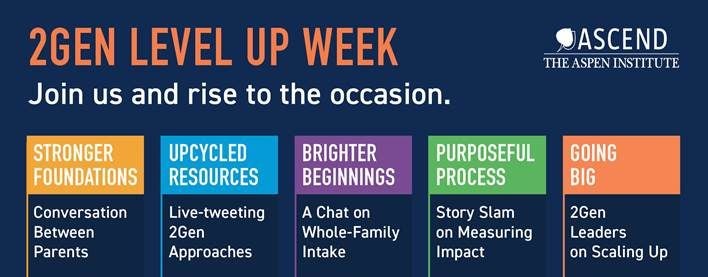WEBINAR: Understanding and Supporting Student Parents
On April 18, Ascend hosted a webinar on two recent publications, “Accelerating Postsecondary success for Parents: Identifying and Addressing Mental Health Needs” and a joint-factsheet with the Institute for Women’s Policy research (IWPR), “Parents in College: By the Numbers”. The webinar, “Understanding and Supporting Student Parents” featured an Ascend Colorado fellow, an Ascend Parent Advisor, working directly with young families to provide access to mental health supports and an Ascend Network Partner who spoke to trends among today’s student parent population based on data from the National Postsecondary Student Aid Study (NPSAS). The panelists spoke to some of the challenges that face young parents, especially those pursuing a postsecondary credential, and highlighted areas where more research is needed as well as resources for targeted mental healthcare.
Webinar speakers included Janine McMahon, Ascend Parent Advisor and Parent Education and Support Specialist for the Catholic Charities Archdiocese of Hartford; Stephanie Seng, Ascend Colorado Children and Families Fellow and Director of the Center for Family and Couple Therapy & Children’s Trauma and Resilience Assessment Center at Colorado State University; Lindsey Reichlin Cruse, Study Director at the Institute for Women’s Policy Research; Portia Polk, Program Associate at Ascend at the Aspen Institute; and David Croom, Assistant Director for Postsecondary Achievement and Innovation at Ascend at the Aspen Institute.
Check out the webinar recording on our GoTo channel here.
Our speakers shared a breadth of knowledge and expertise on needed innovations in mental healthcare provision for parents and how students who are parents persist while pursuing a postsecondary credential. As a follow-up to the discussion, we asked each speaker to share responses to some of our listeners’ questions. Read on for their answers.
Any examples of state or local partnerships between WIOA programs and child care providers to provide child care assistance for parents in shorter-term job training programs?
- This IWPR report has examples of how some job training programs are working to connect participants with child care supports. More research on the availability of supportive services like child care in job training can be found here.
- The Arkansas Career Pathways Initiative and Washington State’s Basic Food Employment and Training (BFET) program both provide support, including providing assistance paying for child care, to eligible adults to participate in job training or vocational programs.
How are individuals identified as parents and do you have data regarding the percent of parents that were previously in foster care?
- The question that determines parent status comes from both financial aid data (FAFSA) and student interviews; it asks whether the parent has a dependent. We don’t have data on the share of student parents that were in foster care.
Is the GPA data on student parents divided by different institutions such as public 2-years and 4-year?
- It can be but it’s not in the fact sheet.
Is there any student parent transfer data from 2-year to 4-year?
- Completion rates include students who transferred, but I don’t have data on the transfer rate itself. It’s likely that is included in the NPSAS though.
What screening tool(s) have been used to diagnose mental health?
- I’m not entirely clear about the meaning of the question. When any student seeks mental health treatment (whether at our student health center or the CFCT), they complete intake paperwork and complete an intake session to determine goals for future work in therapy.
Do you have suggestions for a community agency that wants to help address mental health concerns with participants with little to no formally trained mental health professionals?
- Perhaps connect with local mental health professionals who can provide psychoeducation about mental health issues (either written info or through presentations). You could also consider peer led support groups.
How do these numbers relate to low-income parents vs. all parents attending college?
- The data presented was for all student parents, but many student parents live in or near poverty. Two in five students live below the poverty line (41 percent), and another 27 percent have incomes that are less than 200 percent of poverty. Poverty rates among student parents are higher for those who identify as Black, more than one race, American Indian/Alaska Native, and Latino/a, compared with White, Asian, and Native Hawaiian/Pacific Islander student parents.
Do you know how many student parents are accessing TANF, SNAP or public benefits?
- Roughly 4 percent of student parents are receiving TANF and just over a quarter are receiving SNAP, according to the 2015-16 NPSAS.
Any work being done around advocating for more funding for CCAMPIS (bringing child care funding to schools that are qualified)?
- Representative Katherine Clark and Senators Murray and Duckworth have introduced bills to reauthorize CCAMPIS permanently and at higher levels of funding for the past handful of years and are expected to introduce new bills in the House and Senate this year as well.
Stephanie, can you share more about when all of these amazing services for students who parent began, or perhaps took off, and what were the efforts behind getting buy-in from across campus?
- I’m told that the task force emerged from our president’s initiative around making the campus better for female identified employees. Work done in this area brought a greater awareness to campus about the issues.
Related Posts















